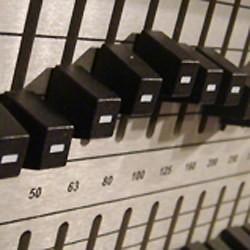
Old school Nashville guys always wanted the wedges to sound like the “bigs” in a recording studio – these days they do the IEM thing, but I assume that they are still into the flat type sound in their wedges.
The Texans and LA guys were more into an assault at 1K 6 Hz, or what I would call the metal look. I’ve noticed many Canadians wanted a “bark” at 1K 25 Hz, but the sample on that one isn’t that big.
Remember, the Brit style curve noted here presumes a loud wedge on a loud stage – the lower mid-range cuts leave a hole for all the backline guitar noise.
Regardless of your geographical prejudices, significant equalization is needed to get most stage monitors (indoors, anyway) where they need to be for most of the artists we face in live sound work. That isn’t good or bad, it just is.
Though we could say that such EQ methods are the epitome of audio relativism (as in, screw purity, we’re going to whack this sucker until it’s loud enough), there is one absolute here that should be remembered the next time someone pushes that old fundamentalist purity rap: This use of EQ deals with a stage soundfield with the backline factored in.
And it predicts and accepts the fact that the artist may have a bit of a hearing loss. Hearing loss, in this business?
Now there’s an absolute.
